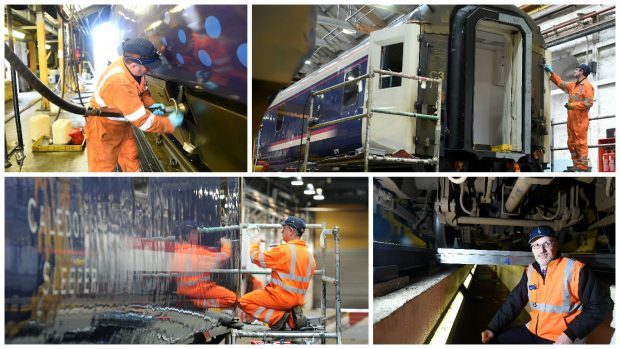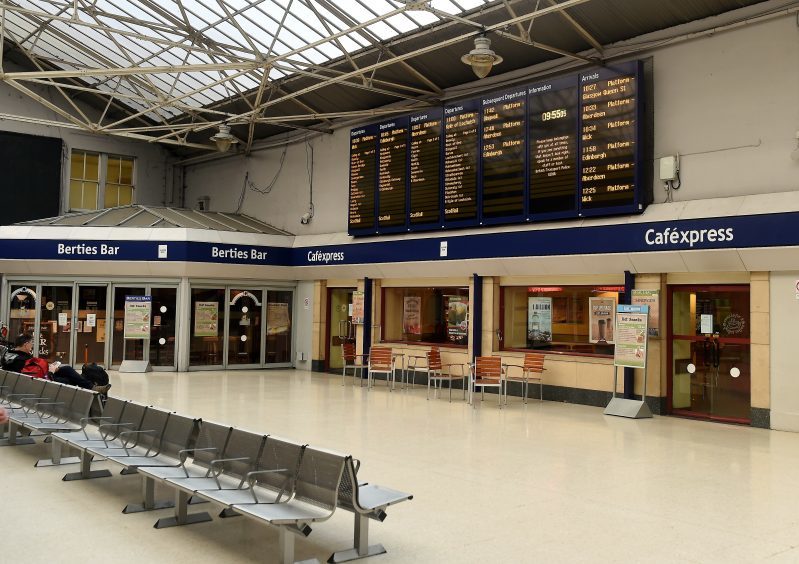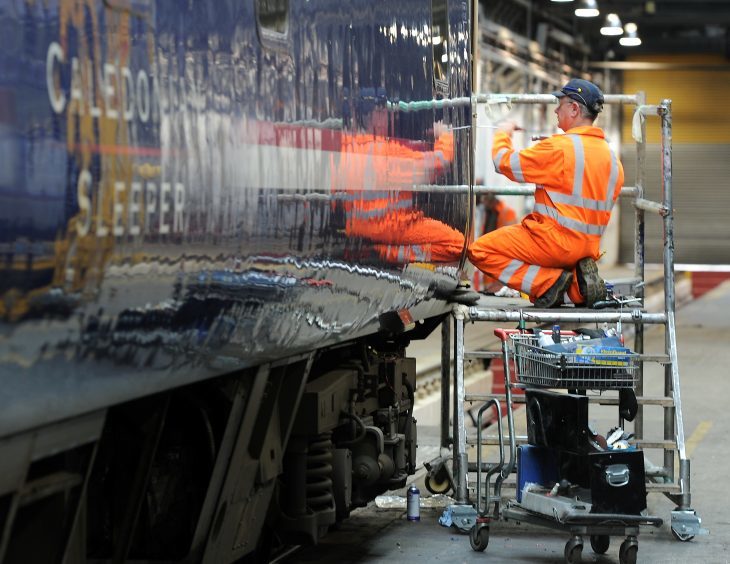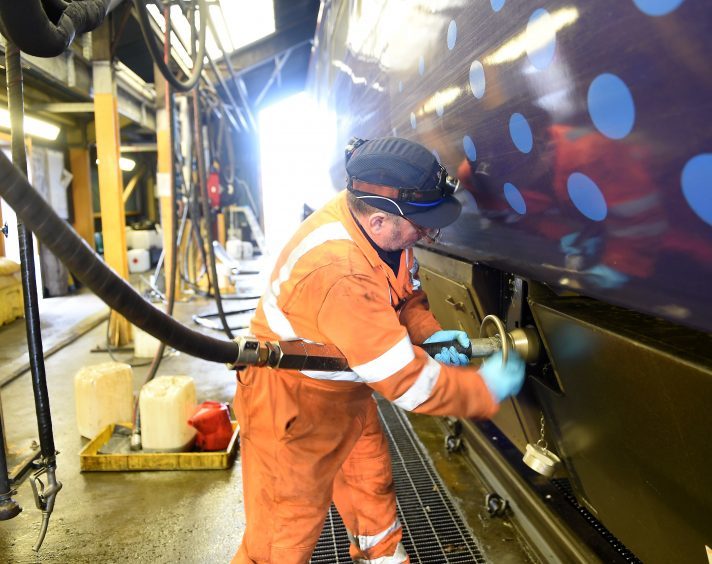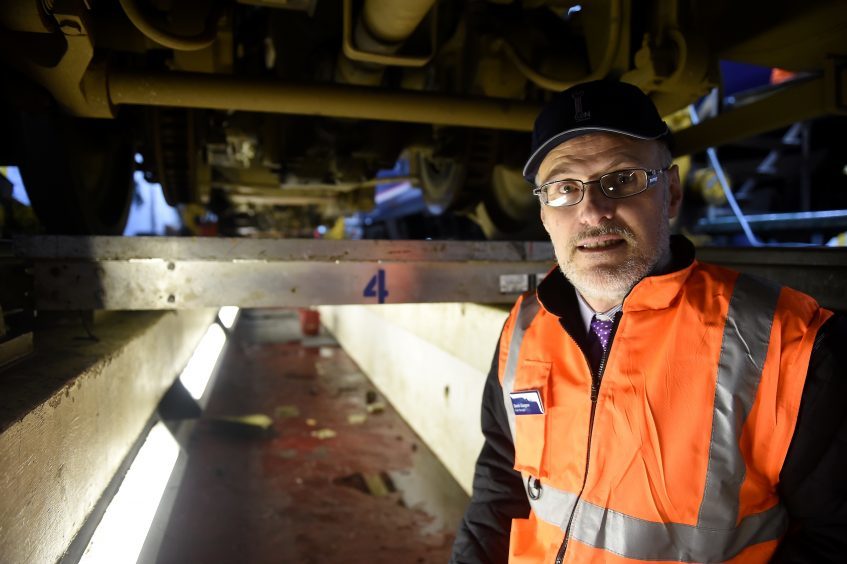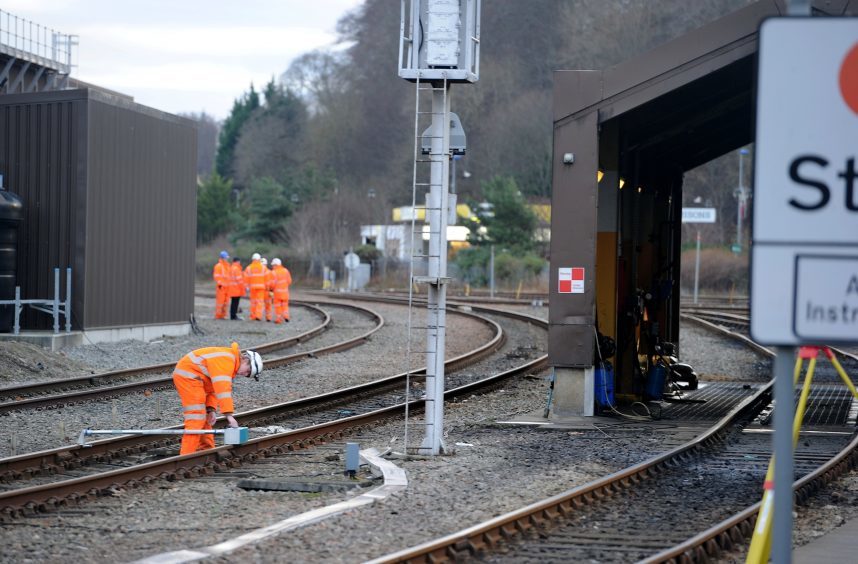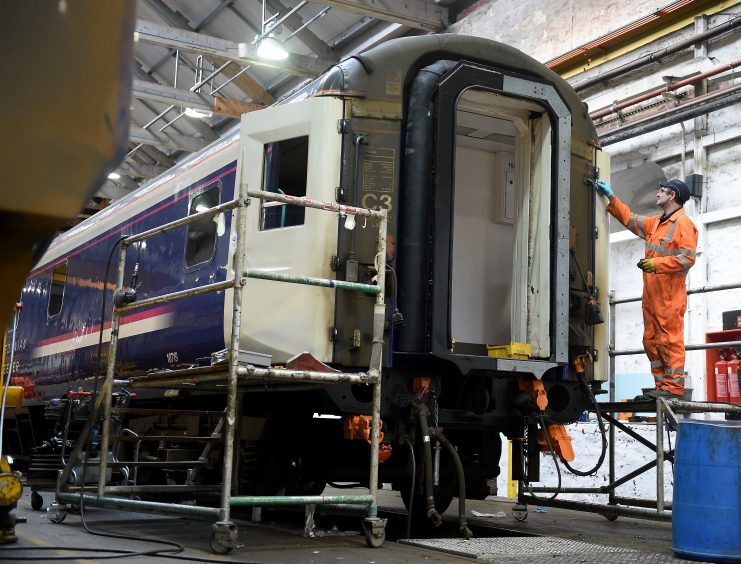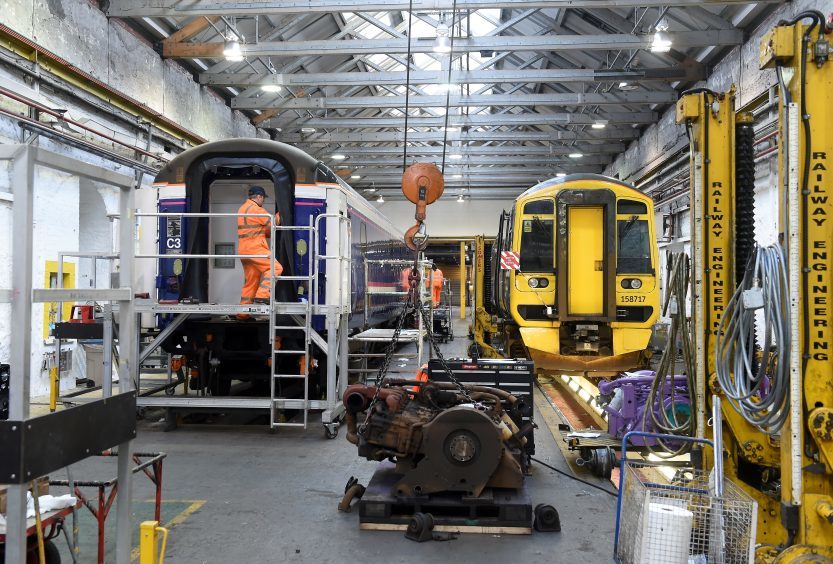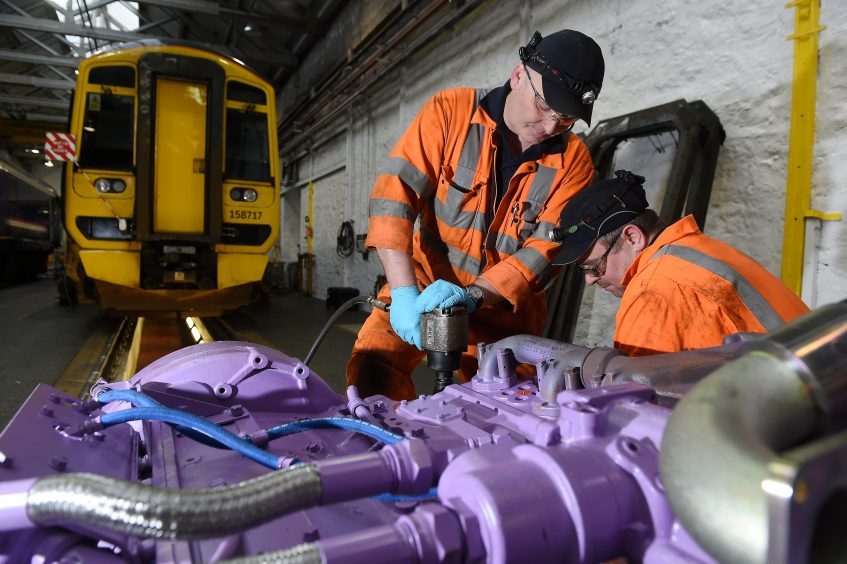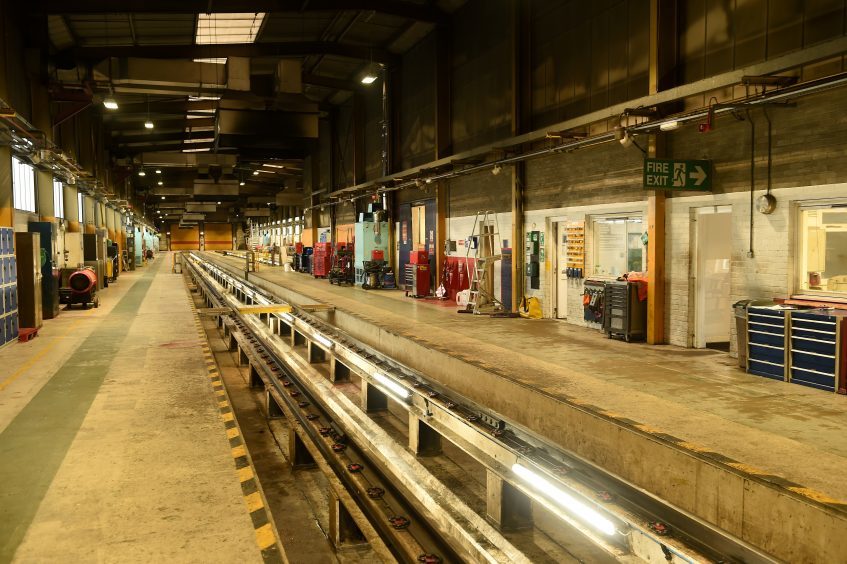For the most part the public experience of the rail network is gazing up at a departures board or sipping a cup of coffee in a carriage.
But behind the scenes in Inverness there is a huge engineering effort running around the clock to keep the trains on track and, wehere possible, on time.
It is a world of huge numbers – both in the value and the quantity of equipment required to keep the network running smoothly.
And it is a world that the manager of the Abellio ScotRail engineering depot at Inverness acknowledges most people don’t know exists.
Derek Glasgow is the fleet manager at the Inverness Depot, near the city’s station, which houses the engineering and maintenance unit which looks after the rolling stock.
He said: “I just want people to know we are here and the work that we are doing.
“This is a busy depot and we have a lot of people working here in well paid and highly skilled jobs.”
The yard takes in trains from the across the north network and from further afield, even from the new Borders Railway for maintenance.
Routine work covers everything from refurbishing worn out doors – to completing replacing engines and gearboxes which have reached their maximum mileage on the class 170 and 158 trains widely operated by ScotRail.
The yard works 365 days a year and 24 hours a day, with much of the running repair work taking place overnight – while planned maintenance is carried out during the day.
The station complex employs around 200 people in total – with around 80 working at the depot in a range of highly skilled – and paid – jobs.
Mr Glasgow said: “With all this heavy engineering and heavy work we’re doing, it all comes back to the customer.
“All they care about at the end of the day is the train turning up on time, it being reasonably warm and it getting in on time.
“They don’t really know or care about the engineering that’s going on. Ultimately what’s important is going from A to B.”
He added: “It’s quite funny because if I ever take people around the depot they are shocked.
“They don’t know about it and the work we do here.”
Among the challenges they have to deal with is fitting around the timetable to get a train to the depot from the central belt.
Another Highland challenge is dealing with animal strikes – a deer can knock out an engine, while cows can knock a train off the rails, a frequent problem on the Kyle and Far North lines.
Mr Glasgow said that a technical member of staff is now based in Wick, which has helped prevent cancellations in the last few months.
THE FUTURE OF INVERNESS STATION
The rail depot at Inverness Station is preparing for major changes over the next two years in preparation for new rolling stock.
Abellio ScotRail are planning to introduce new high speed trains across Scotland – including from Inverness to the central belt.
It is estimated there will be around 18 months in total of major works to prepare for high speed trains being brought in.
All the work has to fit around the depot’s day-to-day work keeping the railway network going.
Derek Glasgow, fleet manager at the depot, said: “We’ve got to keep getting the trains out while all this work is going on.
“Actually I’ve taken a manager off his shift for nine months working out how we can keep the trains running and get all this work underway as well.”
The work involves trebling the depot’s area for refuelling trains in size to accommodate the new rolling stock.
Some of the tracks in the depot will be straightened so the longer trains can sit while they are being worked on.
New energy supplies will also be installed so the trains can be powered without having their engines running, partly to cut down on emissions and also to keep the engines up to temperature.
